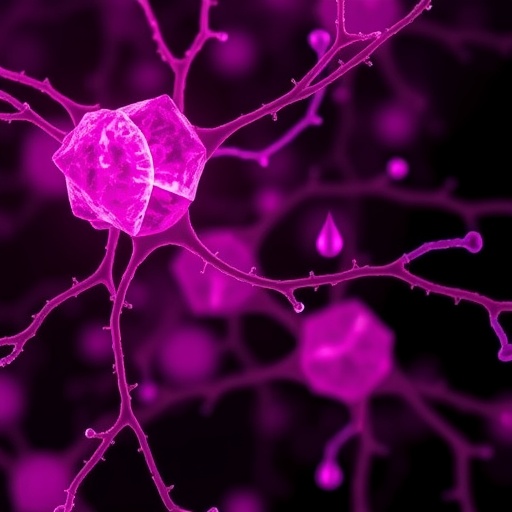In a recent startling revelation within forensic pathology, researchers have identified an unprecedented case of postmortem contamination involving isopropanol and chlorhexidine detected in the tissues of a 4-month-old infant. This discovery, as detailed in an upcoming report, challenges longstanding assumptions about chemical residues found during autopsies and underscores the critical importance of disinfection protocols in forensic examinations. The intricate details of this case expand our understanding of how routine practices may inadvertently contaminate biological samples, thus complicating cause-of-death determinations.
The case resurfaced as forensic experts noticed anomalously high concentrations of isopropanol and chlorhexidine—both common antiseptic agents—present in tissue samples collected during a routine autopsy of an infant who had passed away under unexplained circumstances. These substances, while widely used for their disinfecting properties in medical and forensic settings, are typically expected to dissipate or remain at negligible levels postmortem. Their unexpected presence raised immediate concerns about potential procedural contamination, triggering a deeper investigation into the methodologies employed during the autopsy.
Isopropanol, commonly known as rubbing alcohol, and chlorhexidine, a potent antimicrobial agent often applied to skin before surgical intervention or sample collection, are standard components in the disinfection arsenal. However, their chemical interactions and persistence in cadaveric tissues have not been extensively studied in forensic contexts, particularly in pediatric cases. The persistence of these compounds in the delicate tissues of infants introduces a new variable that must be accounted for when interpreting toxicological results.
.adsslot_wC8xZuk3Ay{ width:728px !important; height:90px !important; }
@media (max-width:1199px) { .adsslot_wC8xZuk3Ay{ width:468px !important; height:60px !important; } }
@media (max-width:767px) { .adsslot_wC8xZuk3Ay{ width:320px !important; height:50px !important; } }
ADVERTISEMENT
This finding holds profound ramifications for forensic science. Chemicals introduced during postmortem processing can mimic or mask pathological findings, potentially confounding cause-of-death analyses. For example, the presence of isopropanol might erroneously suggest intoxication, while chlorhexidine could interfere with microbial cultures or histological examinations. By demonstrating how improper disinfection methods lead to these artifacts, the case advocates for stringent procedural standardization to uphold the integrity of forensic evidence.
Extensive chemical analysis employed in this investigation utilized advanced chromatographic and mass spectrometric techniques, allowing quantification of trace levels of disinfectants within tissue matrices. These methodologies, optimized for forensic toxicology, revealed the depth of contamination and distinguished between compounds introduced antemortem versus those absorbed postmortem. The precision of these analytical tools highlights the evolving sophistication of forensic diagnostics, although it also reveals vulnerabilities where procedural errors can skew results.
The ethical dimensions of such findings are equally significant. Families of deceased individuals seek clear, accurate explanations for their loved ones’ deaths. Contaminations that obscure postmortem data complicate these efforts, potentially resulting in misdiagnoses or unwarranted suspicion. This scenario underscores the broader societal imperative for forensic processes to be beyond reproach, combining scientific rigor with transparency to maintain public trust.
Further research inspired by this case may focus on mapping the kinetics of antiseptic agents in cadaveric tissues under varying conditions. Such studies would elucidate the persistence and diffusion patterns of these chemicals, helping forensic investigators discern genuine toxic exposures from procedural artifacts. In parallel, new guidelines might be developed to refine disinfection techniques that balance sterility with sample integrity, possibly introducing alternative agents with minimal postmortem retention.
This incident also prompts a reevaluation of autopsy room practices, including the selection of disinfectants, exposure times, and contact surfaces. The compatibility of various chemical agents with forensic analyses should form part of comprehensive best-practice recommendations, ideally informed by collaborative efforts among toxicologists, pathologists, and forensic chemists. Introducing validation steps post-disinfection to confirm the absence of contamination might become a standard safeguard.
Technology may also play an instrumental role in mitigating such issues. Automation of disinfection procedures could reduce human error, while real-time detection systems may flag unexpected chemical residues prior to in-depth analyses. Additionally, forensic laboratories might implement stricter environmental controls and workflow designs that segregate disinfection zones from sample processing areas to minimize cross-contamination.
In the broader context of forensic science, this case serves as a poignant reminder that scientific outcomes are only as reliable as the procedures that yield them. As forensic techniques become increasingly sensitive and capable, the margin for procedural error narrows, placing a premium on accuracy and consistency. Lessons learned from this investigation can potentially prevent future misinterpretations, safeguarding the pursuit of truth in medicolegal death investigations.
The scientific community’s response to these findings will be watched closely. Scholarly discourse will likely delve into the balance between necessary asepsis and analytical purity, fostering dialogue that may reshape forensic operational norms globally. By bringing to light the impact of overlooked procedural factors, this case widens perspectives on how forensic evidence must be handled and interpreted.
Ultimately, the detection of isopropanol and chlorhexidine in an infant’s postmortem tissues hinges on a nuanced understanding of the interplay between biological decomposition processes and external chemical exposures during forensic examination. This interplay defines the boundaries within which forensic science must operate to deliver conclusive, credible results that withstand legal scrutiny. Upholding these standards ensures justice is truly served as forensic experts unravel the mysteries behind untimely deaths.
The ramifications of this case extend beyond forensic medicine, touching on clinical, legal, and ethical dimensions that collectively shape how society comprehends death and accountability. As the field moves forward, integrating these insights will be essential to optimize procedural reliability and reinforce the foundational trust placed in forensic investigations.
Subject of Research: Postmortem contamination in forensic autopsy linked to disinfection procedures involving isopropanol and chlorhexidine in an infant case.
Article Title: Unusual findings of isopropanol and chlorhexidine in a 4-month infant: a case of postmortem contamination linked to an inappropriate disinfection procedure.
Article References:
Knapp-Gisclon, A., Mayer-Duverneuil, C., Rambaud, C. et al. Unusual findings of isopropanol and chlorhexidine in a 4-month infant: a case of postmortem contamination linked to an inappropriate disinfection procedure. Int J Legal Med (2025). https://doi.org/10.1007/s00414-025-03565-4
Image Credits: AI Generated
Tags: biological sample contaminationcause-of-death investigationschlorhexidine in forensic examinationsdisinfectant protocols in autopsiesforensic disinfection practicesforensic pathologyforensic toxicology challengesinfant autopsy proceduresinfant mortality forensic studiesisopropanol chemical residuespostmortem contaminationunexpected chemical findings in autopsies





